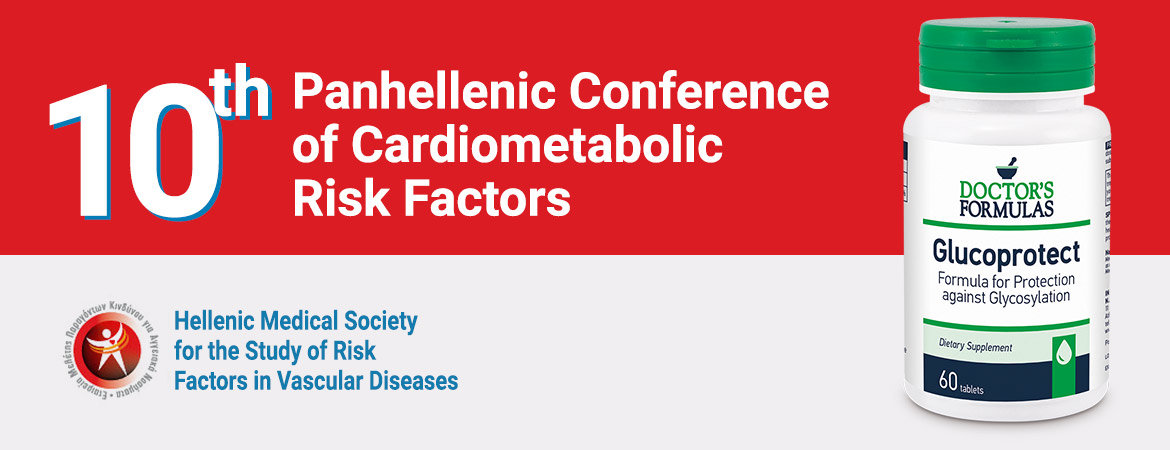10th Panhellenic Conference of Cardiometabolic Risk Factors
(3rd award)
In Vivo reduction of glycemia, glycosylated hemoglobin and platelet aggregation by administration of lipoic acid, carnosine, thiamine, to diabetic patients.
We are proud to announce that during the 10th Panhellenic Cardiometabolic Risk Factors Conference, Glucoprotect of Doctor's Formulas was awarded for the oral presentation on the results of the In Vivo study at the University of Ioannina headed by Dr. Karkabouna Spyridon.
The results of the study announced in the conference concerned the In Vivo reduction in glycemia, glycosylated hemoglobin and platelet aggregation by administering Lipoic Acid, Carnosine, Thiamine to diabetic patients.
Glycosylation is an "invisible" inflammation
It is a normal biochemical process of the human organism. In particular, glycosylation is a protein-enzyme reaction of glucose.
When high blood glucose levels exceed the limits (hyperglycemia), then glucose molecules are uncontrollably adhered to the proteins of mainly connective tissue, hemoglobin, collagen and elastin, altering their structure.
These harmful compounds are called oxidizedAGEs (Advanced Glycation End Products) or "Advanced Sweeteners".
The new macromolecules that are formed are called glycotoxins and are capable of affecting the vessels, interfering with normal tissue function and producing free radicals by inactivating the natural antioxidant enzymes of the body.
They can also damage cell DNA by modifying cellular functions, reducing our body's natural defenses.
In diabetic patients, life expectancy is reduced due to early cardiovascular disease and accompanying microvascular complications.
During chronic hyperglycemic conditions, the effects of microvascular lesions and macrovascular complications are increasing.
There are indications that such complications and alterations may even precede diabetes mellitus.
Macrovascular complications are defined as ischemic heart disease, peripheral arterial disease and cerebrovascular disease.
Microvascular lesions are defined as peripheral neuropathy, retinopathy and microalbuminuria.
According to international guidelines, early glycemic adjustment is recommended, while the primary goal of glycemic control should be HbA1c <6.5% to achieve a reduction in morbidity Diabetes Mellitus associated with long-term microvascular complications.

